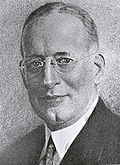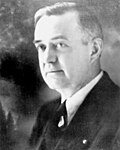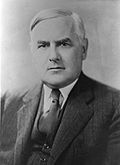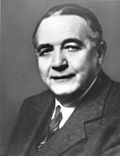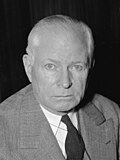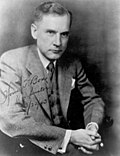November 8, 1932 | ||||||||||||||||||||||||||||||||||||||||||||||||||||||||||||||
34 of the 96 seats in the United States Senate 49 seats needed for a majority | ||||||||||||||||||||||||||||||||||||||||||||||||||||||||||||||
|---|---|---|---|---|---|---|---|---|---|---|---|---|---|---|---|---|---|---|---|---|---|---|---|---|---|---|---|---|---|---|---|---|---|---|---|---|---|---|---|---|---|---|---|---|---|---|---|---|---|---|---|---|---|---|---|---|---|---|---|---|---|---|
| ||||||||||||||||||||||||||||||||||||||||||||||||||||||||||||||
 Results of the elections: Democratic gain Democratic hold Republican hold No election | ||||||||||||||||||||||||||||||||||||||||||||||||||||||||||||||
| ||||||||||||||||||||||||||||||||||||||||||||||||||||||||||||||
The 1932 United States Senate elections coincided with Democrat Franklin D. Roosevelt's landslide victory over incumbent Herbert Hoover in the presidential election. The 32 seats of Class 3 were contested in regular elections, and special elections were held to fill vacancies.
Contents
- Gains, losses, and holds
- Retirements
- Defeats
- Post-election changes
- Change in composition
- After the January special election
- Before the November elections
- Result of the November elections
- Race summary
- Elections during the 72nd Congress
- Elections leading to the 73rd Congress
- Closest races
- Alabama
- Arizona
- Arkansas
- Arkansas (special)
- Arkansas (regular)
- California
- Colorado
- Colorado (special)
- Colorado (regular)
- Connecticut
- Florida
- Georgia
- Georgia (regular)
- Georgia (special)
- Idaho
- Illinois
- Indiana
- Iowa
- Kansas
- Kentucky
- Louisiana
- Maryland
- Missouri
- Nevada
- New Hampshire
- New Jersey (special)
- New York
- North Carolina
- North Carolina (special)
- North Carolina (regular)
- North Dakota
- Ohio
- Oklahoma
- Oregon
- Pennsylvania
- South Carolina
- South Dakota
- Utah
- Vermont
- Washington
- Wisconsin
- See also
- Notes
- References
With the Hoover administration widely blamed for the Great Depression, Republicans lost twelve seats and control of the chamber to the Democrats, who won 28 of the 34 contested races (two Democratic incumbents, Duncan U. Fletcher of Florida and John H. Overton of Louisiana, were re-elected unopposed). Democrats gained another seat through an appointment in Nebraska, bringing their total number of seats up to 60.
Among the Republican incumbents defeated in 1932 were Senate Majority Leader James Watson and five-term Senator Reed Smoot, an author of the controversial Smoot-Hawley tariff. [3] This was the first of four elections in which a Senate leader lost re-election, and the only time they were a Republican. This election marked the first time a woman was elected to the Senate, that being Hattie Caraway of Arkansas. As of 2024, this is the last time Democrats won a Senate election in Kansas.
This is also one of only five occasions where 10 or more Senate seats changed hands in an election, with the other occasions being in 1920, 1946, 1958, and 1980.
















